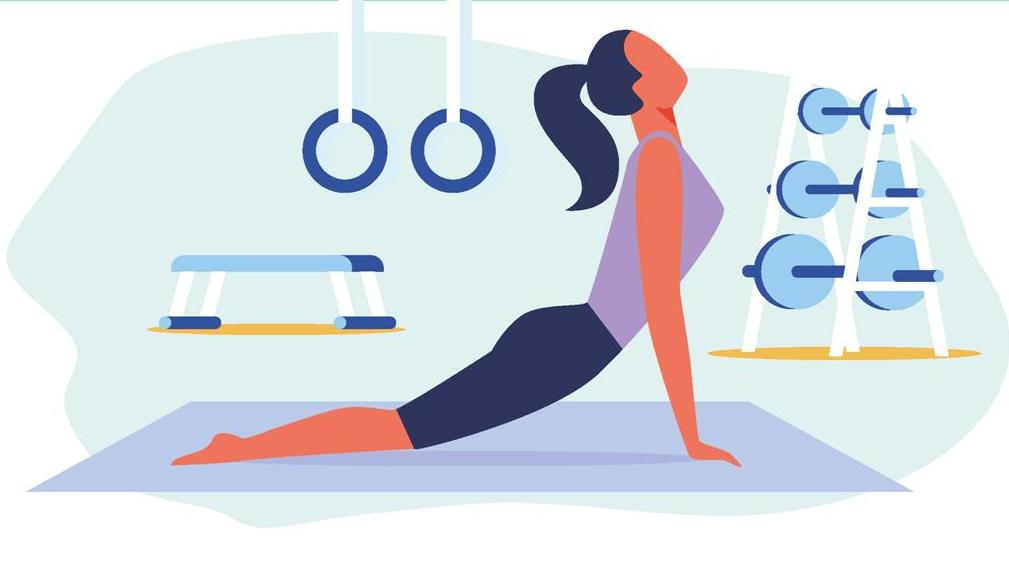If you’re struggling to reach your goals, these common fitness mistakes could be what’s holding you back. Here’s how to remedy them…
Whether it’s relying on the scales to measure your success or the fact that you don’t have a training plan when you arrive at the gym, lots of us make mistakes when it comes to working out, especially at the beginning when you’re new to exercise. With this in mind, we called in the experts to tell us what the most common errors are, and what to do instead. While you may think that the fixes seem counter-intuitive (why is it important to throw away the scales if you’re trying to lose weight?), they could actually be key to helping you reach your goals.
The mistake:
You’re not managing your expectations
The fix: “Don’t expect transformative results overnight,” warns Vicki Anstey, leading fitness expert and founder of Barreworks (barreworks.co.uk). “It sounds obvious, but 80 percent of gym goers quit after less than five months’ membership. Getting disillusioned with the impact your workouts are having will only happen if your expectations are out of whack at the beginning. If your goal is to train four to five times a week when you first start out, expect that, within a few weeks, you’ll be doing well to hit one or two sessions because life gets in the way. Start with a more reasonable expectation of yourself and if you exceed it, you’ll be left feeling far more positive and motivated to continue.”
The mistake:
You’re buying into fads
The fix: “People try to find quick fixes, whether that be with a fad diet or the latest slimming tea trend,” says Krissy Cela, founder and trainer of The Tone & Sculpt app (available from £13.99 at The App Store and on Google Play). “Creating healthy habits may not change your body overnight but you’ll have a better long-term result, physically and mentally.”
The mistake:
You’re doing excessive cardio
The fix: “Cardio is an important part of fitness, but far from the most efficient way to lose fat,” says specialist pre/postnatal personal trainer Emily Gilliland (emilygfitness.co.uk). “Building lean muscle by utilising resistance training, combined with sensible nutrition, will change your body shape more effectively than cardio alone. Lean muscle is metabolically active, which means it needs more fuel to be maintained, making your body a more efficient fat-burning machine. Resistance training also has a preventative effect on muscle and bone loss, which is particularly important as we age.”
The mistake:
You’re relying on the scales to measure your success
The fix: “Ditch the scales,” Vicki advises. “They’re such a blunt instrument to measure results of a new training regime. They won’t give you the reading you’re looking for because you won’t be taking into account water retention and increased muscle mass.
Instead, take measurements with a tape, or use your clothes to give you a reading of how your body shape has changed over time. Take a baseline of your weights and reps when you start out, then compare each month. Consider changes in your mental health or sleep patterns. Who cares if you have put on 2lbs if you are stronger, your clothes are looser, you have more energy and your mood is lighter?”
The mistake:
You’re drastically cutting your calories
The fix: “For some reason, a lot of people believe that, by consuming minimal calories, they will achieve their desired physique. However, this is just not the case,” explains Krissy. “Our bodies thrive on nutritious wholesome foods – we need sufficient calories for our muscles to grow, our brains to function properly, and to have healthy skin, hair and nails. When you quickly cut down on calories, your body thinks it’s going into starvation mode, storing all the extra calories it can as fat reserves. If you want to reduce your calories, do it gradually, and with a dietitian to make sure you stay within a healthy range.”
The mistake:
You don’t have a plan
The fix: “You have a vague goal – ‘lose weight’ or ‘get strong’ for example – and a shiny new gym membership, but no idea what to actually do, so you head to the treadmill, maybe try a few resistance machines, shower and leave,” says Emily. “Repeat that each time and you have a recipe for very little progress, ultimately leaving you feeling deflated and giving up. However, if you have a plan to follow and a goal to aim for, then you will never find yourself wondering what to do next. Plans progress you slowly and consistently, and ensure you aren’t missing vital areas because you aren’t sure what to do, helping you to achieve your goals.”
The mistake:
You’re sticking to the same routine
The fix: “Repeating the same routine is detrimental to your overall progress when setting new goals,” says Chloe Twist, a personal trainer from OriGym Centre of Excellence (origympersonaltrainercourses.co.uk). “If you exercise in the exact same way each time, you’ll hit a plateau pretty quickly and wonder why you’re not seeing any new results. Think of it this way: bodybuilders only make progress when they up their weights and vary their workouts each week. It’s the same for losing weight or improving body composition; if you don’t change things up or beat your personal best each week, you won’t hit your targets! Don’t let your body ‘get used’ to the exercises that you’re doing. Keep it on its toes by varying how you exercise and always challenge yourself to push things further.”
The mistake:
Your motivations aren’t quite right
The fix: “If you are purely motivated by changing a dress size, or looking great for a specific occasion, you’re unlikely to see long-term success,” says Vicki. “Same for ‘transactional exercise’ where you are doing it purely for a direct ‘reward’ (such as cake or wine). These are extrinsic (or superficial) motivations. Find a deeper motivation that means something to you and you’ll keep going. If you’re motivated by wanting to live longer and be healthier for your children, or to participate in a sport because you love it and it makes you feel good, you’ll stick with it. If there’s no tangible goal in sight, but the process itself is just personally rewarding, then you’re already winning.”
Davina says
“I think quite a common misconception with training is that speed will make an exercise harder when actually, often slowing an exercise down does that. I’ve learned that it’s much better to have an amazing technique and do something slow and controlled than to crack out 20 sit ups that have terrible form and might harm your back. Ed Lumsden [Davina’s PT] taught me that it’s more effective to do 10 press ups from your knees where your chest touches the floor and you are slow and controlled down and then fast coming up, rather than 20 little dips.”




















